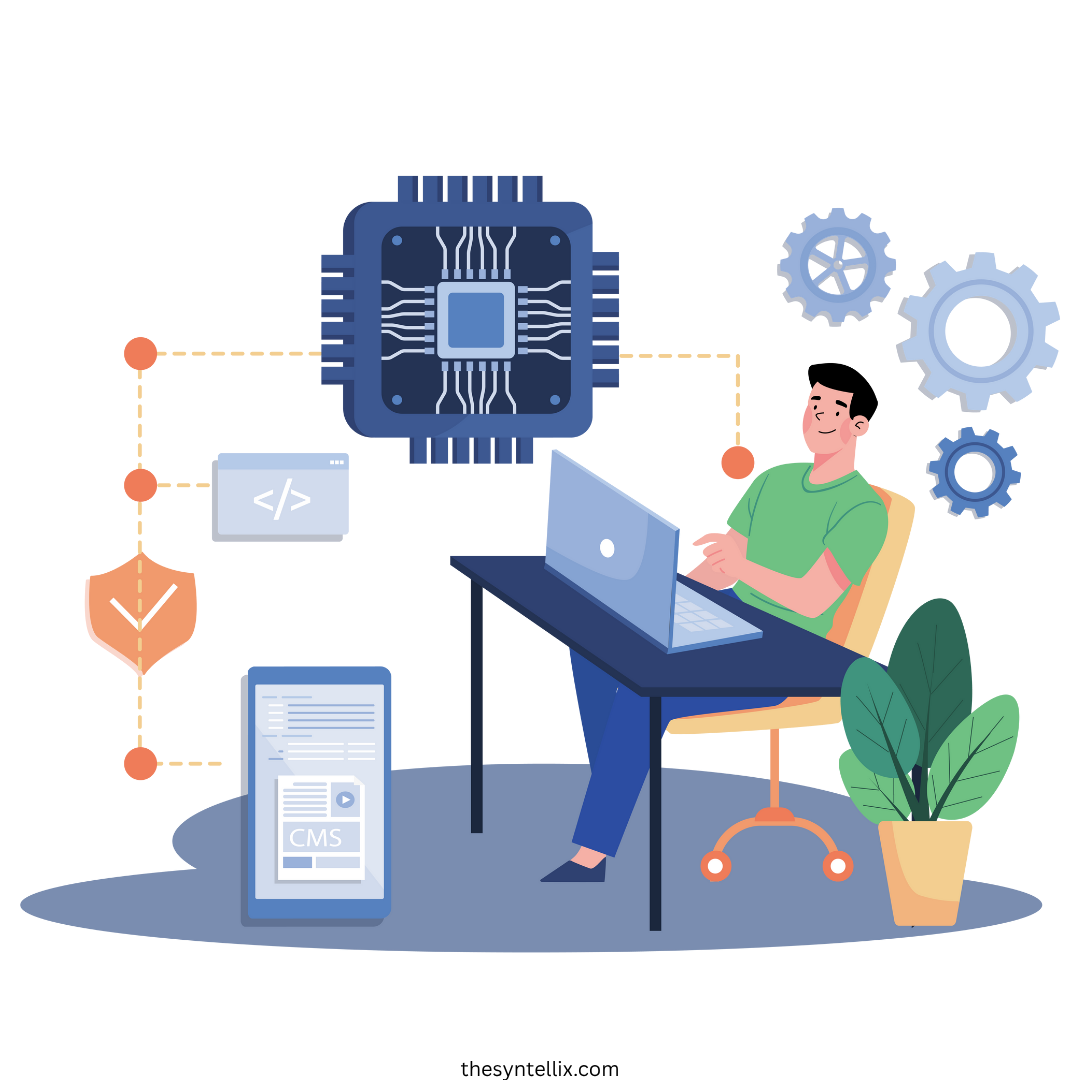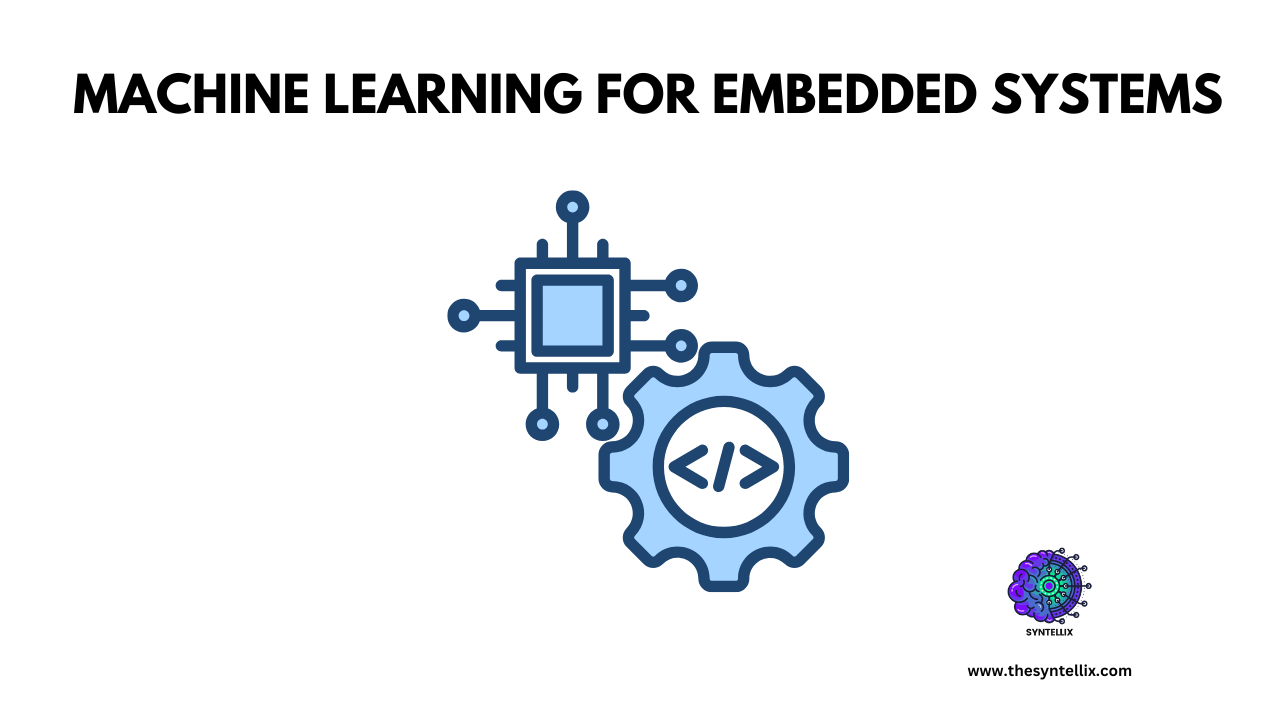Machine learning is a subfield of artificial intelligence which gives a machine an ability to learn and predicts from data in an iterative manner using different techniques. It means that it is a way of writing computer programs that learns from raw data and converts it into meaningful information that is beneficial for End users. For example one Machine learning program might be written for end users to give them customized product recommendations just like we see on amazon or any other Ecommerce platform.
The major difference between machine learning program and normal computer program is that machine learning programs are not written by any programmer instead they use specialized algorithms to learn different rules from data. This process of self learning is known as “Algorithm training”.
From smart homes to autonomous vehicles, machine learning (ML) is bringing intelligence to the smallest devices. Welcome to the world of embedded systems powered by ML, where tiny, resource-constrained devices are making big waves in technology. As we step into 2025, the fusion of machine learning and embedded systems is transforming industries, enabling smarter devices, and creating new opportunities for innovation.
In this comprehensive guide, we’ll explore the relationship between Machine Learning In Embedded Systems, their applications, challenges, and future potential. Whether you’re a tech enthusiast, a developer, or a business leader, this blog will provide valuable insights into the world of ML-powered embedded systems.
How Machine Learning Works
The ML process typically involves four steps:
- Data Collection: Gathering relevant data for training.
- Model Training: Using algorithms to learn patterns from the data.
- Evaluation: Testing the model’s accuracy and performance.
- Deployment: Integrating the model into real-world applications.
The Relationship Between Machine Learning and Embedded Systems
Machine learning (ML) and embedded systems have a shared relationship, in which machine learning algorithms are integrated into embedded systems to enhance their intelligence and capabilities. This integration is also known as “TinyML”, which allows embedded systems to learn from data, make predictions, and adapt the changing conditions.
Nowadays more advanced microprocessors can bear heavy workload of machine learning algorithms.
The integration of ML into embedded systems brings intelligence and decision-making capabilities to small, resource-constrained devices. This combination enables:
- Real-Time Processing: Instant analysis and response to data.
- Reduced Latency: Faster decision-making without relying on cloud computing.
- Enhanced Functionality: Smarter devices that can adapt and learn.
Challenges of Combining ML and Embedded Systems
- Limited Computational Resources:
- Embedded systems often have limited processing power and memory.
- Power Constraints:
- ML algorithms can be power-hungry, which is a challenge for battery-operated devices.
- Data Storage Limitations:
- Storing large datasets and models on embedded systems can be difficult.
- Real-Time Processing:
- Many embedded systems require real-time responses, which can be challenging for ML models.
- Model Optimization:
- ML models needs to be optimized for size and speed to run efficiently on embedded systems.
Applications of Machine Learning in Embedded Systems
1. Internet of Things (IoT)
- Smart Homes:
- ML-powered thermostats and security systems.
- Wearable Devices:
- Fitness trackers that monitor health metrics in real-time.
2. Automotive Industry
- Autonomous Vehicles:
- ML algorithms for object detection and navigation.
- Advanced Driver Assistance Systems (ADAS):
- Features like lane departure warnings and adaptive cruise control.
3. Industrial Automation
- Predictive Maintenance:
- ML models to predict equipment failures and reduce downtime.
- Quality Control:
- Computer vision systems for defect detection.
4. Healthcare
- Medical Devices:
- Wearable ECG monitors and insulin pumps with ML capabilities.
- Remote Patient Monitoring:
- Real-time analysis of patient data for early diagnosis.
5. Consumer Electronics
- Smart Speakers:
- Voice recognition and natural language processing.
- Cameras:
- Facial recognition and scene optimization.
Future Potential of Machine Learning in Embedded Systems
1. TinyML
- A growing field focused on running ML models on microcontrollers and other tiny devices.
- Applications:
- Smart sensors, wearable devices, and IoT applications.
2. Edge AI
- Running ML models on edge devices for faster processing and reduced latency.
- Applications:
- Autonomous vehicles, industrial automation, and smart cities.
3. Federated Learning
- A decentralized approach to ML that protects user privacy by training models on local devices.
- Applications:
- Healthcare, finance, and IoT.
4. Quantum Machine Learning
- Combining quantum computing with ML to solve complex problems faster.
- Applications:
- Drug discovery, optimization problems, and cryptography.
Machine Learning Project Ideas for Embedded Systems
1. Smart Home Automation
- Develop an ML-powered system to control lights, temperature, and security.
2. Health Monitoring Wearable
- Create a wearable device that tracks health metrics and provides real-time feedback.
3. Predictive Maintenance System
- Build a system to predict equipment failures in industrial machines.
4. Autonomous Robot
- Design a small robot that uses ML for navigation and object detection.
5. Voice-Controlled Device
- Develop a device that responds to voice commands using natural language processing.
FAQs About Machine Learning in Embedded Systems
Q: What are embedded systems?
A: Small, specialized computing devices designed to perform specific tasks.
Q: How is machine learning used in embedded systems?
A: ML brings intelligence and decision-making capabilities to embedded devices.
Q: What are the challenges of applying ML in embedded systems?
A: Limited resources, power constraints, and real-time processing requirements.
Q: What is TinyML?
A: A field focused on running ML models on microcontrollers and tiny devices.
Conclusion
Machine learning is transforming embedded systems, enabling smarter, more efficient devices across industries. From IoT and healthcare to automotive and industrial automation, the potential of ML-powered embedded systems is limitless.
As we move into 2025, the fusion of machine learning and embedded systems will continue to drive innovation and create new opportunities. Whether you’re a developer, a business leader, or a tech enthusiast, now is the time to explore the possibilities of ML in embedded systems.
So, what are you waiting for? Dive into the world of ML-powered embedded systems and start your own project today. Share your thoughts or questions in the comments below!
External Links:

Stay ahead of the curve with the latest insights, tips, and trends in AI, technology, and innovation.

